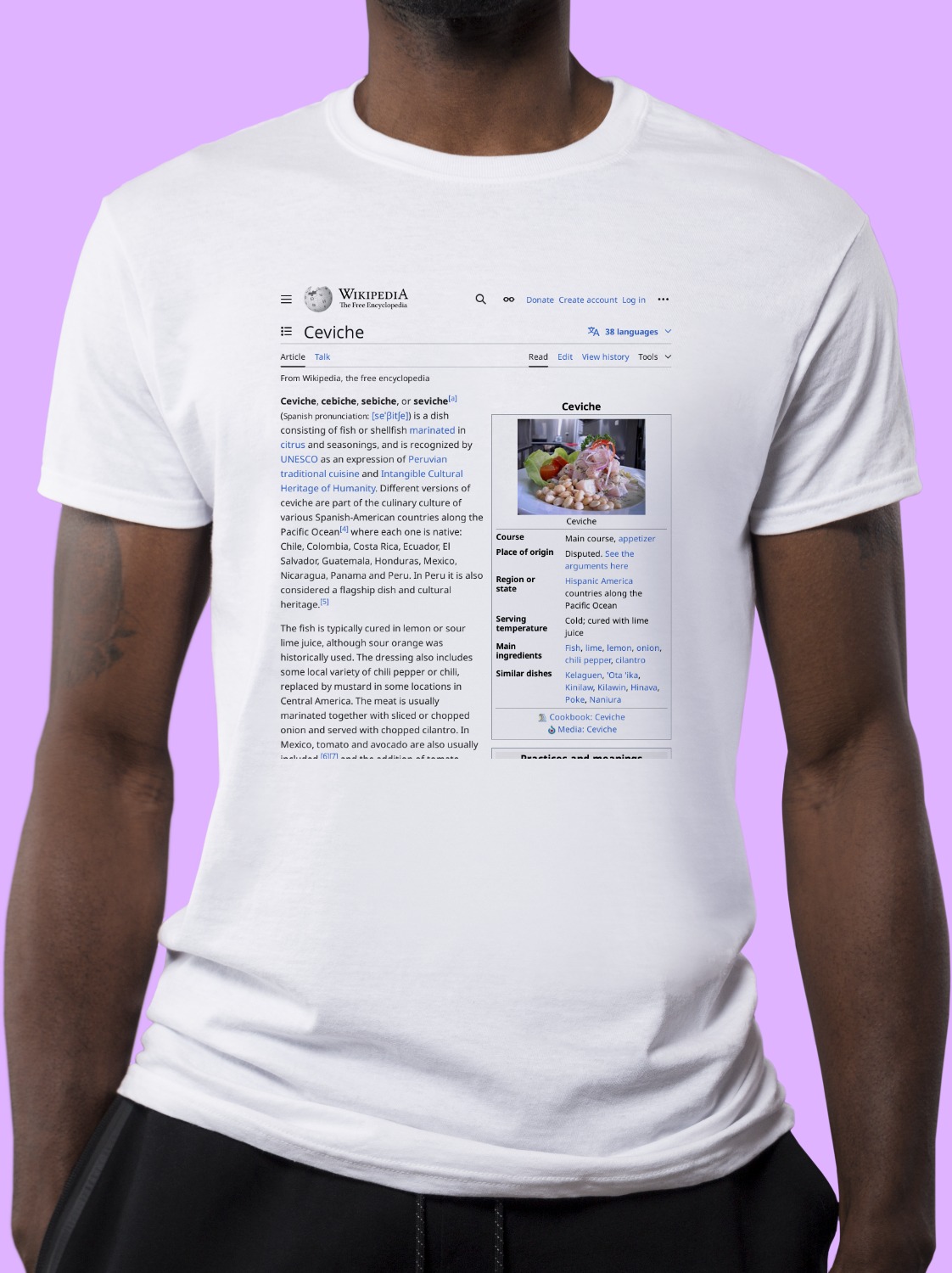
Ceviche Shirt
A classic cotton tee emblazoned with the Wikipedia article on Ceviche ↗.
cotton tee emblazoned with the Wikipedia article on Ceviche ↗.- Preshrunk jersey knit
- Seamless double-needle 2.2 cm collar
- Taped neck and shoulders
- Tear away label
- Double-needle sleeve and bottom hems
- Quarter-turned to eliminate centre crease
Ceviche, cebiche, sebiche, or seviche (Spanish pronunciation: [seˈβitʃe]) is a cold dish consisting of fish or shellfish marinated in citrus and seasonings. Different versions of ceviche are part of the culinary cultures of various Latin American countries along the Pacific Ocean where each one is native, including Chile, Colombia, Costa Rica, Ecuador, El Salvador, Guatemala, Honduras, Mexico, Puerto Rico, Nicaragua, Panama, and Peru. Ceviche is considered the national dish of Peru and is recognized by UNESCO as an expression of Peruvian traditional cuisine and an Intangible Cultural Heritage of Humanity.
The fish or shellfish in ceviche is not served raw like sashimi; the citric acid from the citrus marinade causes the proteins in the seafood to become denatured, resulting in the dish appearing to be "cooked" without the application of heat. The fish is typically cured in lemon or sour lime juice, although sour orange was historically used. The dressing also includes some local variety of chili pepper or chili, replaced by mustard in some parts of Central America. The marinade usually also includes sliced or chopped onions and chopped cilantro, though in some regions such as Mexico, tomatoes, avocadoes, and tomato sauce may be included.
Ceviche is often eaten as an appetizer; if eaten as a main dish, it is usually accompanied by side dishes that complement its flavors, such as sweet potato, lettuce, maize, avocado, or fried plantains, among various other accompaniments.
About Wikishirt
Wikishirt is a retail experiment that lets you buy a shirt with any Wikipedia Article printed on it. There are over 5 million Wikipedia articles, so we have over 5 million shirts.Check out our homepage for random featured shirts and more!